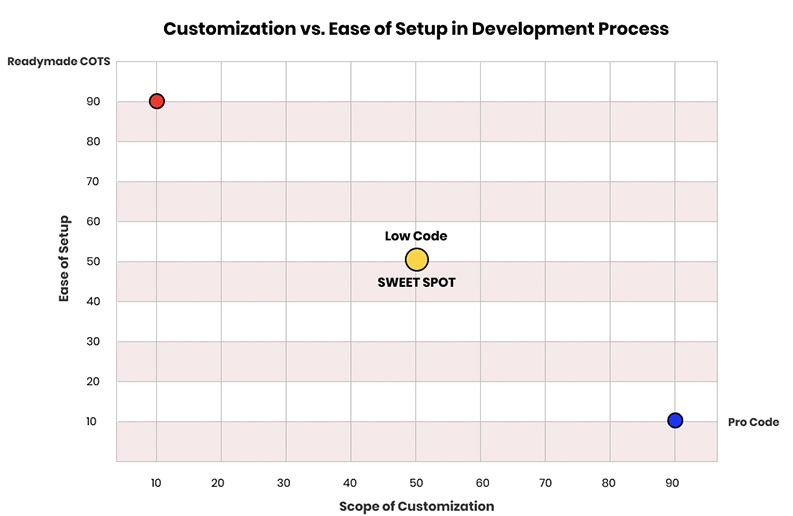Executive Summary
In today’s fast-moving world, technology is a key business differentiator. For CIOs, this creates a crucial dilemma: build applications from scratch, buy off-the-shelf solutions, or leverage low-code platforms? As competition intensifies, it’s becoming clear that it’s too late to code from scratch, especially when speed and adaptability are critical.
Business Differentiation Through Technology
CIOs constantly think about how technology can give their business an edge. They face the question: do we buy a solution like SAP or build something custom from the ground up? For a small business — say, with just five employees — implementing SAP might be overkill. It’s costly, complicated, and can be too rigid for the company’s specific needs.
This is where low-code platforms make a real difference. Take OutSystems, for example. A small company could use it to create a simple ERP system, tailored to their needs. As the business grows, that same low-code platform can evolve with them, building more complex applications without starting from scratch. CIOs want to make sure that technology aligns with their unique business fabric — something that traditional commercial off-the-shelf (COTS) solutions can struggle to do.
Low code offers a way to bridge the gap between a full custom build and a generic solution like SAP. It allows businesses to create the exact solution they need, but at a much lower cost and in less time.
The Speed and Flexibility of Low-Code
Speed is everything in today’s market. Building applications from scratch can take months — sometimes years — while low-code platforms let you build in a fraction of the time. Why would a CTO hire 5 developers to code a custom app when they could use a low-code platform with just 2 developers?Low-code platforms offer a similar level of customization, but with a faster delivery time. This means your competitors won’t get ahead while you’re still working on development. Plus, low code allows for rapid iterations and updates. You’re not stuck with a rigid system — you can adapt as your business evolves.

For CIOs, this means they can bring innovation to the market faster and customize their apps based on their business logic. In industries where speed is crucial, like finance or retail, this becomes a significant advantage.
Choosing the Right Low-Code Platform
With almost every major product offering some form of low code today, CIOs have plenty of options. Platforms like Salesforce and Microsoft now feature built-in low-code capabilities. This allows businesses to build customized workflows and applications without starting from scratch.
But the real question for CIOs is: which platform is right for my business? It’s important to choose a general-purpose low-code platform. Why? Because it offers more flexibility. Platforms like OutSystems or Microsoft Power Apps allow businesses to build everything from CRM systems to ERP solutions — without needing a new platform for each task.
Some low-code platforms are built for specific use cases, like employee onboarding or CRM systems, but these can limit your options. CIOs should think long-term and choose a platform that can grow with their business, supporting multiple applications as needs evolve.
The Hybrid Approach: When Low-Code Isn’t Enough
While low-code platforms are great for many use cases, they’re not the solution for everything. For industries like aerospace or defense, where systems are highly complex and need strict compliance and precision, a hybrid approach may be best.
In these sectors, low-code can be used for simpler, non-critical applications, while custom coding can handle the more complex, mission-critical systems. This way, CIOs can benefit from the speed of low-code while still meeting the demands of complex environments.




